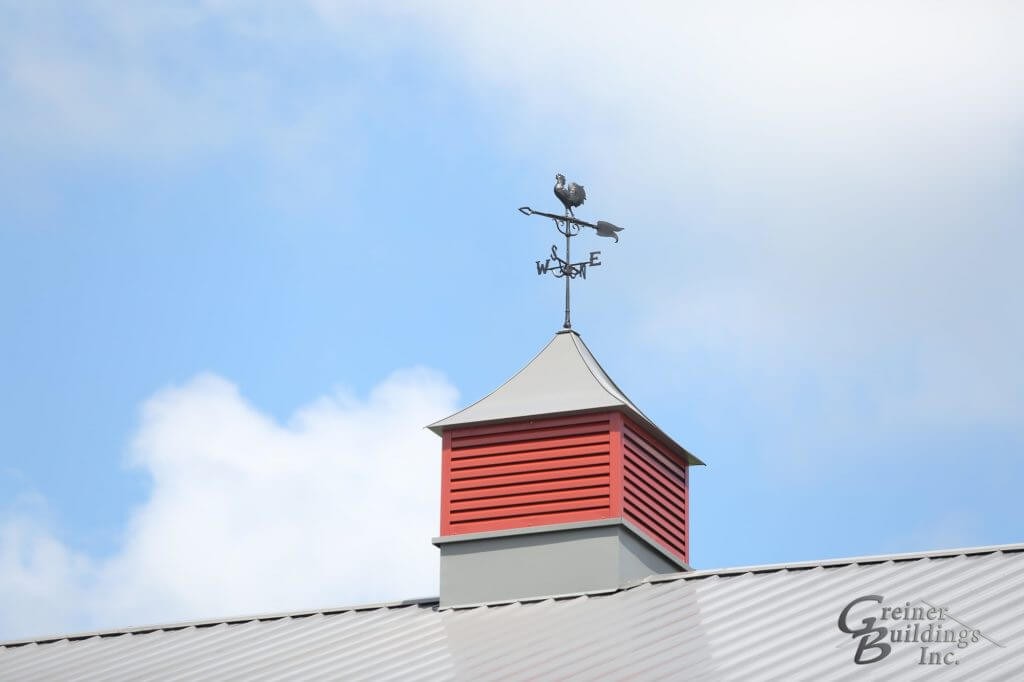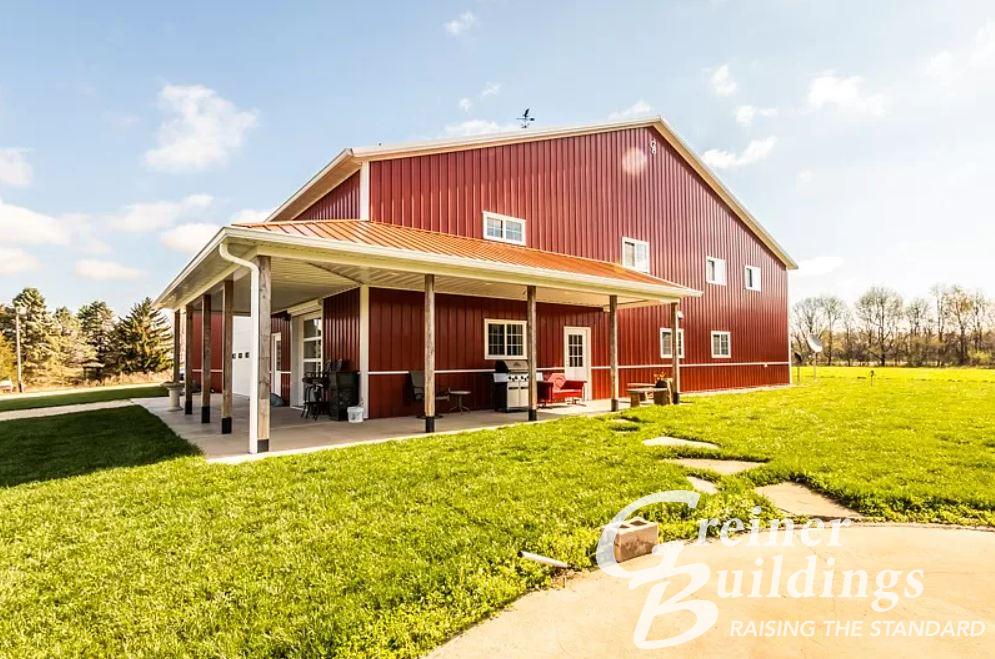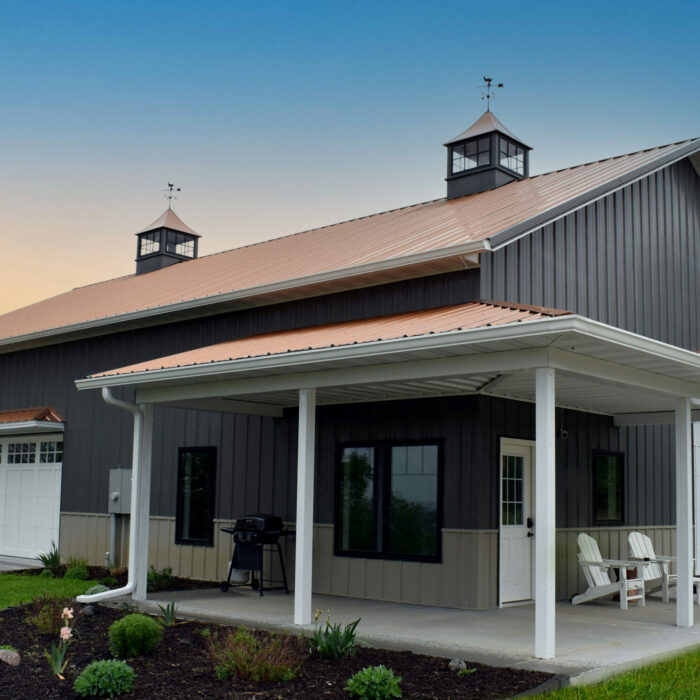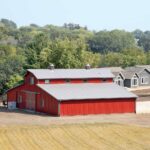People build pole barn workshops and homes for a variety of reasons. Some want a shop and home combination, others want a place to store large equipment/machinery, some use pole barns for livestock and horses.
While the exact purpose of your pole barn will play a large factor in what you need to do for ventilation, any of the above purposes require good air quality and proper pole barn ventilation.
Why is Pole Barn Ventilation Important?
Ventilation is generally defined as airflow or the exchange of air. When you talk about ventilating a home or building, you are talking about bringing in outdoor air to replace indoor air. This can help to improve air quality and prevent condensation or moisture build-up in a space. Preventing this moisture build-up in your pole building is essential because the build-up can cause issues with mold, lumber decay, damage to possessions in the building, poor human health, and poor animal health. You do not want to risk damage to your building or your own health by not having proper ventilation.
Are there situations that require careful consideration about ventilating your post frame building? Yes, depending on what you use your pole barn for, you may need to pay extra attention to the ventilation of your building. For example, if you are washing a lot of equipment, you will need to be intentional about ventilation because this will add lots of moisture to the air that will require more ventilation. Other examples of when you’ll need extra ventilation include using/storing chemicals, housing animals, and using the pole barn as a workshop or living space.
The good news is that there are a variety of ways to ventilate your pole barn, which you can learn more about below.


6 Ways to Ventilate Your Post Frame Building
There are several ways to ensure your pole barn home or post frame building has proper ventilation. Our pole building design and construction experts can help you pick the methods that work best for your specific lifestyle and needs, but you can check out several pole barn ventilation options below.
Vented Ridges
Having ventilation at the top of your pole barn roof can be very important. The peak or ridge of your roof should be vented to allow warm and moist air to leave the building. This type of ventilation is important because hot air rises, and a vented ridge will allow this air to escape.
Vented Eaves
Vented eaves or a vented overhang, can also help with the airflow and ventilation of your building. The vented eaves can draw in cool air from the outdoors, which can help keep your building cooler and give you good airflow and an intake of cool air. This can make the post frame building much more pleasant in temperature.
Gable Vents
A pole barn gable vent is another form of passive ventilation. This type of vent is located on the exterior of the building toward the top of the roof. It allows for ventilation in the attic space and roof. Generally, gable vents are placed at either end of the roof to allow for airflow; cool air can be drawn in and hot air can escape.
Gable vents and ridge vents are not always used together because they are at a similar level and do not allow for proper airflow. The type of vent you use will depend on your structure, but you can always reach out to our experts for questions or help.
Cupolas
A cupola may seem like simply a decorative part of a post frame building, but it actually offers you some practicality when it comes to ventilation. Cupolas are small square structures that can help with ventilation control. They are placed on the top of the ridgeline of a post frame building to help with ventilation and fresh air circulation; hot air can escape through the cupola, keeping the interior structure cooler. You can get different size cupolas based on the size of your pole barn, and there are many different designs, so you can choose one that fits your taste.
Doors and Windows
Doors and windows are obvious sources of airflow for any home. However, in a pole barn, where ventilation is crucial, doors and windows should be given a lot of consideration.
First, you should consider the placement of your pole barn and the direction that it will be facing. This way, you can place doors and windows for optimum airflow. Often, the wind blows in a west to east direction, so having intentionally placed doors and windows can allow for the ventilation and airflow you need.
With this type of building, you also have some unique options for types of doors and windows. A pole building often can feature overhead doors, hydraulic doors, sliders, or bi-fold doors. These larger types of doors work great for storing equipment or having easy access to a workshop, and they can also be helpful in ventilation. You can also have more typical size doors and windows for living spaces.
Exhaust Fans
A pole barn exhaust fan can be a great way to ensure proper ventilation in your space. This type of fan is used to remove moisture and odor from the interior space. This is a mechanical form of ventilation that can be used if some of the natural forms of ventilation are not enough for the space. There are also other types of pole barn ventilation fans that can be installed such as ceiling fans, attic fans, and more.
Other Factors Related to Ventilation and Post Frame Construction
Below, we address some bonus factors related to ventilation or the proper construction of your metal post frame home or building.
- Insulation – It is also important to note that your pole barn should be properly insulated. You can have problems with excessive heat or cold in your pole barn if it is not properly insulated, and that can cause larger issues. Insulating the walls and roof of your pole barn will help with temperature control and ventilation overall. Whether you decide to use spray foam or batt, you will want a product designed specifically for metal post frame buildings and is resistant to moisture, mold and mildew.
- Post Savers – Post frame construction can also benefit from materials like post savers. A post saver is a thermoplastic barrier that protects the posts of your building by blocking moisture and oxygen from reaching the posts. This provides a sealed barrier of protection against decomposition, rot, and decay.
- DripX Condensation Control – Another way to control moisture with your post frame construction is through the use of DripX condensation control roof panels. These panels are easy to install; they are placed on the underside of a metal roof where they can trap moisture. The trapped moisture is then released back into the air when conditions rise above the dew point.
If you are spending the money to create a pole barn home or workshop, you want to make sure it is built and ventilated properly. You do not want to invest in a structure that will suffer from moisture damage and other problems.
At Greiner Buildings, we have the expertise necessary to help you build a pole barn that fits your wants and your needs. We understand post frame construction completely, so we can help you design a building that is properly ventilated and beautifully designed. We can start the process by offering 2D or 3D design services to make sure you are getting a well thought out building that meets your needs.




